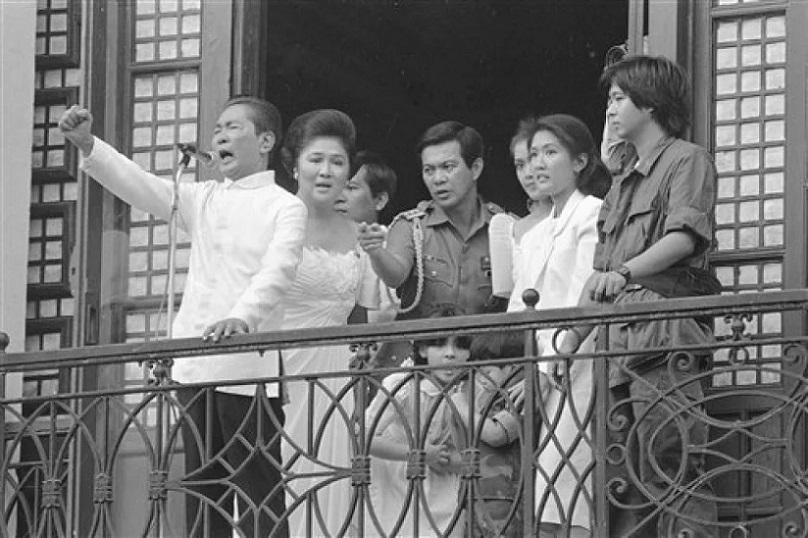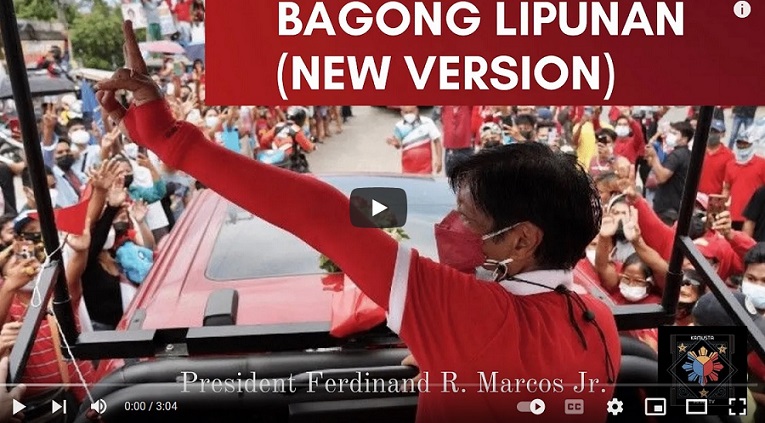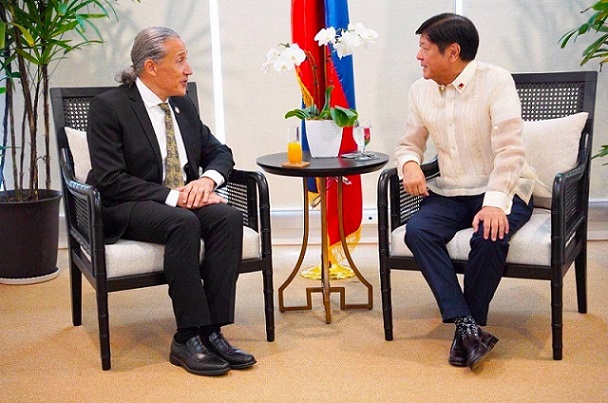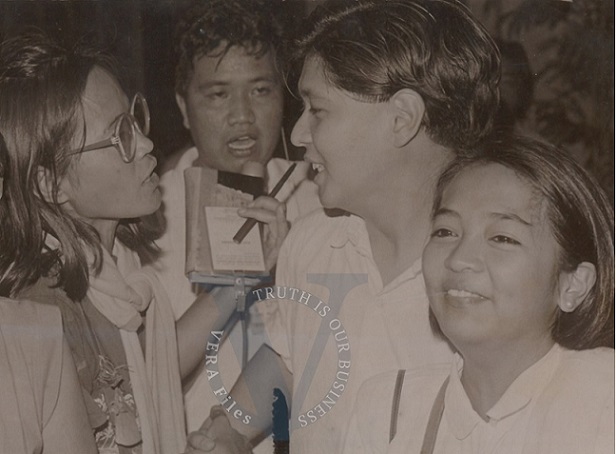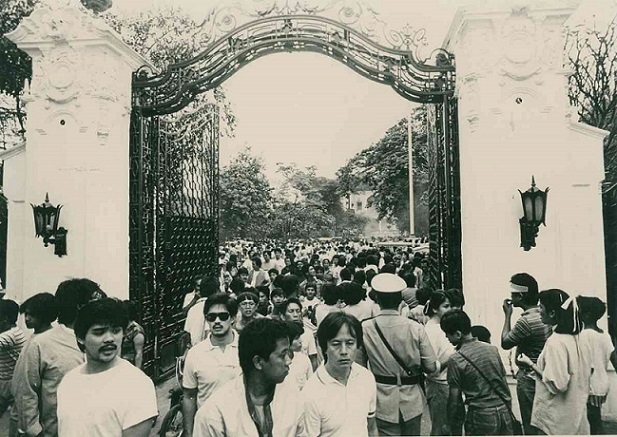
In my column last Monday on the last 24 hours of the Marcoses in Malacañang on Feb. 25, 1986, I shared the narration of the late colonel Arturo C. Aruiza, aide-de-camp of the late president Ferdinand Marcos Sr., in his book “From Malacañang to Makiki” about their problem when the heavily medicated chief executive could not remember the combination of the steel safe in his bedroom where important documents and valuables were stored. They had to leave the safe unopened.
Aruiza said despite Marcos’ seemingly disoriented state, he picked up a brown Samsonite attaché case, gave it to a valet and told him, under pain of his displeasure, not to open it or part with it.
What happened to the steel safe left in Malacañang?
There were two versions, as related by Aruiza in his book, based on the testimonies in the trial of former first lady Imelda Marcos in New York for acts under Racketeer Influenced and Corrupt Organizations (RICO).
The first version was that a US Embassy security officer was able to open the steel safe.
Aruiza said: “In a Federal court in Lower Manhattan, New York City, Dr. Angelita T. Reyes would testify for the prosecution in the Racketeer Influenced and Corrupt Organizations (RICO) case against Mrs. Marcos and there the doctor would offer startling facts:
-Dr. Reyes was a classmate of Mrs. Aquino and was among the very first to enter the bedroom of President Marcos on the evening of February 25, 1986. She went to the Palace to find out whether or not there were dialysis machines.
-Her interest turned to the documents, papers and books in the Study Room and the bedroom of Marcos. She collected these items and put them in several valises, numbering 30, and brought them to her home.
-She identified an American, a Jim Burke, a security officer at the US Embassy in Manila, as being with her in the Palace. She said Burke was there to look for bombs but she admitted that Burke discovered the hidden safe and opened it with special instruments.
“As significant as the questions of who now wears the president’s expensive watches and who now keeps the diamonds that were in the safe is the other question unasked till now: What was an American agent doing in the Palace at that time?”
Another version was that the safe’s code was pasted on the side and an assistant of the late Corazon Aquino’s executive secretary, Joker Arroyo, was able to open it.
Aruiza wrote: “Potenciano A. Roque, an assistant of Joker Arroyo, the first executive secretary of Cory Aquino, was another witness for the prosecution, and in his testimony, he gave the following equally astonishing facts:
-He was driven to the Palace around midnight on February 25, 1986, by Joker Arroyo himself. He also entered the president’s bedroom and found papers pertaining to the Swiss bank accounts. He also found diamonds in several plastic packets.
-He was asked: Where in the President’s bedroom did he find those? He said, ‘in the steel safe,’ which he easily opened because according to Roque, the numbers were ‘just pasted’ on the side.
-On cross examination, Roque told the court that he gave eight to ten packets containing diamonds to Mrs. Aquino who subsequently appointed him chairman of the task force for anti-gambling. He held office in Malacañang.”
What happened to the Samsonite attache case that Marcos told his aide to safeguard?
Aruiza wrote: “In Honolulu, when he lay dying in the hospital, Mrs. Marcos and Ferdinand Jr., decided to open the attache case, expecting to find some valuable documents. To their surprise, it contained a Philippine flag, neatly folded. The three of us in the hospital room could only stare at it. The flag now covers him where he lies in the toolshed in Honolulu.”
The late president’s remains are now at the Libingan ng mga Bayani in Taguig City, Metro Manila.
Aruiza also said that as they hurried out of Malacañang to Clark Air Base, and then to Honolulu (he said the Marcoses thought they were going to Laoag, Ilocos Norte), they brought with them all kinds of luggage – carton boxes, duffel bags, suitcases, Louis Vuitton bags, garment bags – stuffed with personal things including jewelry and money. He mentioned Capt. Ramon Azurin of the Philippine Navy, another presidential aide-de-camp.
His narration: “After docking at the embassy landing, Azurin and his men loaded the luggage in a truck for transporting to the embassy compound. Barely had they finished when they were ordered to board a minibus to be driven to a waiting helicopter nearby. Azurin remonstrated, fearing for the luggage, especially the three duffel bags – two green and one white- which had been entrusted to him with repeated reminders to make sure they arrived wherever they were going. Carrying them from the Palace to the boat, one American sailor had remarked, ‘What’s in this, rocks?’
“Azurin insisted that he and his men load the luggage first into the helicopter before they themselves boarded their flight, but the Americans would not budge. They said the helicopter was warming up, waiting for them, and it was running low on fuel. They assured Azurin repeatedly they would take care of the luggage and, sure enough, they did.
“Only the white duffel bag reached Hickam Air Base in Honolulu. The two green ones, with the bulk of the money, disappeared.
“On the plane, Mrs. Marcos abruptly inquired about the duffel bags. When Capt. Azurin recounted to her what happened on the embassy grounds, she said: ‘A pity if we lose them. There were P25 million in those bags.’
Aruiza did a summary of the money they brought out of Malacañang.
“All the money on board those two planes had come from President Marcos’s private bedroom, representing the unspent portion of the campaign funds.
“How much was there?
“Nurses and agents who had helped pack the money swore that over P61 million was carried out and then stuffed into duffel bags and boxes. There were three duffel bags, two were colored fatigue green, and the third, dirty white. The two green bags disappeared on the embassy grounds.
“The rest of the money was packed as follows: two boxes with P5 million each or a total of P10 million; six boxes with P4 million each or a total of P24 million, and one box (half-filled) with P2 million, which Rolando Abadilla had returned. The grand total was P61 million.
“Of this amount, only P26 million reached Honolulu. This was the figure reported by the US customs personnel, who inventoried the monetary instruments at Hickam. The New York prosecutors would report P22 million.
“If the Hickam customs figures were correct, then P35 million evaporated somewhere. If we use the New York figures, then not P35 million, but P39 million vanished. Either way, if the magical fate of either amount is an explanation of sorts, then several millions got ‘lost’ in this manner along the way.”
When I shared this story to a neighbor, he remarked, “Narinig ko na ‘yan. Nanakawan ang magnanakaw? (I already heard that story. Someone stole from the thief.)”
This column was also carried by Malaya Business Insight, VERA Files
